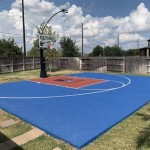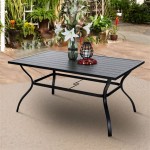Outdoor LED Lights Vs Halogen Light Bulbs: A Comprehensive Comparison for your Lighting Needs
When selecting outdoor lighting, two common options emerge: LED and halogen light bulbs. Both have distinct advantages and drawbacks, making it crucial to assess their characteristics thoroughly before making an informed decision. In this comprehensive guide, we will delve into the key aspects of outdoor LED lights and halogen light bulbs, offering a detailed comparison to assist you in choosing the optimal solution for your specific lighting requirements.
Energy Efficiency and Cost-Effectiveness
Energy efficiency is a primary consideration, as it directly impacts your utility bills. LED lights far surpass halogen bulbs in this regard. LED technology utilizes significantly less energy to produce the same or higher light output, resulting in substantial savings on your electricity consumption. Over the bulb's lifespan, the energy cost savings can be substantial, especially if you use your outdoor lights frequently.
Lifespan and Durability
Lifespan is another crucial factor to consider. LED lights boast an exceptionally long lifespan, typically ranging from 50,000 to 100,000 hours. This means an LED bulb can last for decades, eliminating the need for frequent replacements. Halogen bulbs, on the other hand, have a much shorter lifespan, typically lasting only 2,000 to 4,000 hours. This disparity in lifespan can result in significant cost savings over time, as you will not need to purchase and replace LED bulbs as often.
Light Quality and Color Temperature
Both LED and halogen lights offer a wide range of color temperatures, allowing you to customize the ambiance of your outdoor space. Halogen bulbs emit a warm, yellowish light similar to incandescent bulbs, creating a cozy and inviting atmosphere. LED lights, however, provide a more versatile light output, ranging from warm white to cool white and even colored lights. Cool white LEDs emit a brighter, more bluish light, ideal for illuminating larger areas or security lighting.
Environmental Impact
Environmental consciousness is becoming increasingly important in today's world. LED lights have a clear advantage over halogen bulbs in terms of environmental friendliness. LED lights do not contain mercury or other hazardous materials, making them safer to dispose of and recycle. Additionally, their low energy consumption reduces greenhouse gas emissions, contributing to a more sustainable future.
Suitability for Different Applications
The choice between LED and halogen lights depends on your specific application. For general outdoor lighting, such as illuminating walkways, patios, or gardens, LED lights are the preferred choice due to their energy efficiency, long lifespan, and versatility. Halogen bulbs, with their warm, incandescent-like glow, may be more suitable for applications where ambiance is prioritized over energy efficiency, such as outdoor dining areas or decorative accent lighting.

Led Vs Halogen How To Choose Outdoor Fixtures
Can Household Led Lights Bulbs Type B In Fixtures Handle Rain Outdoor Use Even Though They Are Not Protected By An Overhang Is This Dangerous Quora

Led Vs Halogen What S The Best Choice For Outdoor Lighting

Says Goodbye To Incandescents 1000bulbs Blog

An Overview Of Dimming Leds And How To Tell If Your Lights Are Dimmable

Full Guide On Halogen Vs Led

Why Is Led Light So Bad The Strategist

Led Vs Halogen How To Choose Outdoor Fixtures

Led Vs Halogen Bulbs For Landscape Lighting Bulb Series
Related Posts








